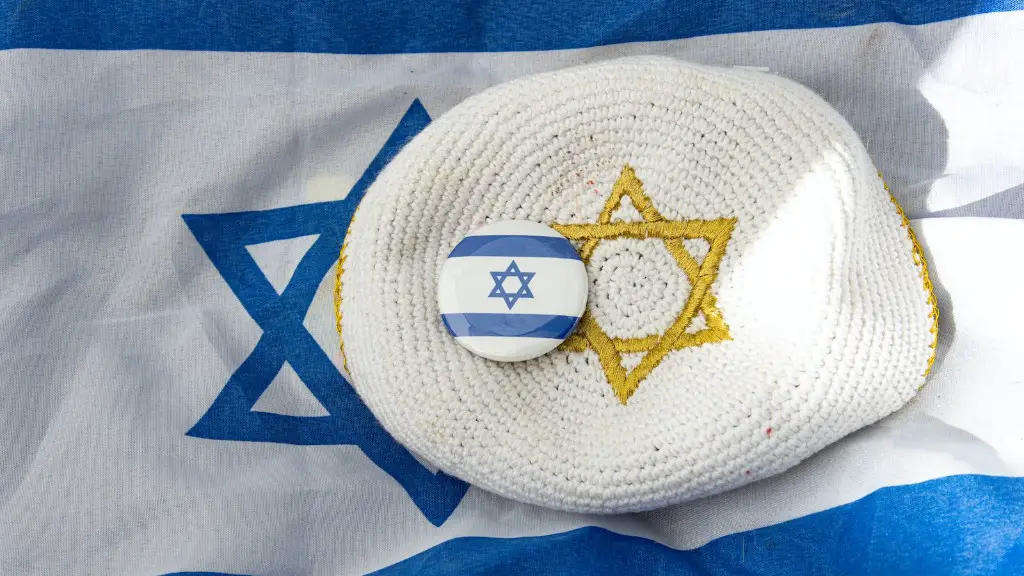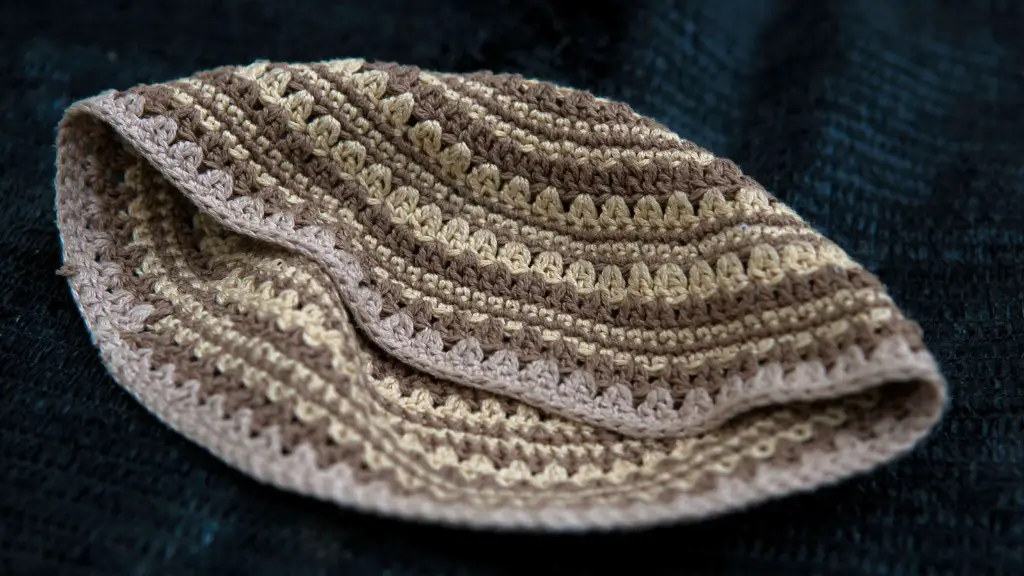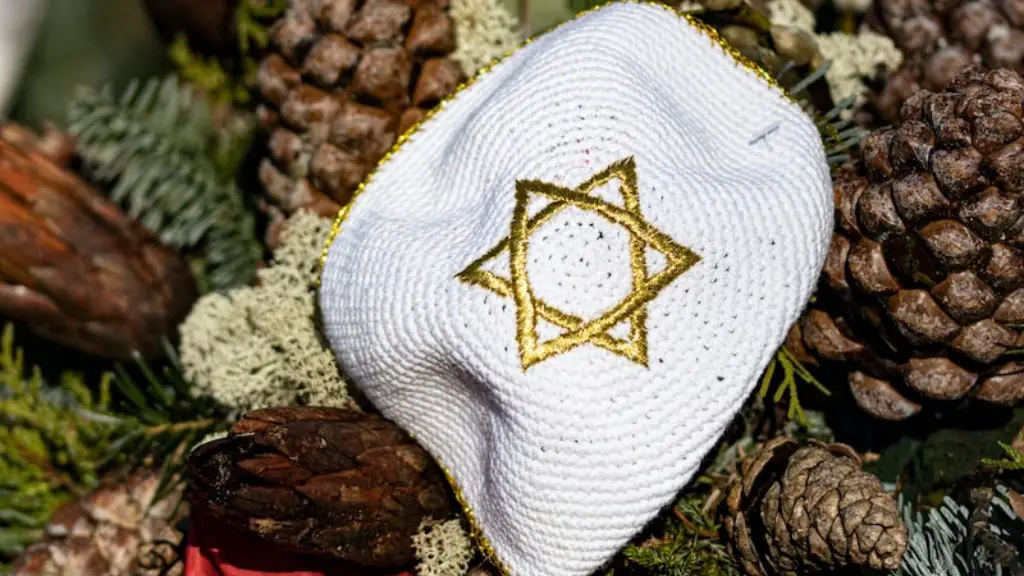What Is Rosh Hashanah In Judaism
Rosh Hashanah is a Jewish holiday that happens right at the start of the new year. It is observed for two days and occurs on the first and second day of Tishrei, which is the seventh month of the Jewish year. The name “Rosh Hashanah” is derived from the Hebrew phrase “reishit hashana,” which translates to “head of the year.” Jews also refer to Rosh Hashanah as the “Day of Judgment,” because on this special day Jews ask God for forgiveness for the wrong doings of the past year.
Rosh Hashanah is both a celebration of the New Year and a time to reflect on one’s relationship with God. On this day, Jews believe that God opens up the book of life and decides who will have a good year and who will have a bad year. During Rosh Hashanah, people spend time in prayer, studying, and reflecting on the past year. During this time, families will come together and celebrate with a festive meal and the blowing of the Shofar, a ram’s horn.
Rosh Hashanah is also a time of joy and happiness. It is a time for people to reconnect with their family and friends, and to focus on what is important. People often exchange gifts, share special family meals, and take time to appreciate their blessings. For those seeking guidance from God, Rosh Hashanah is a time of seeking divine judgement, and praying for deliverance from the effects of our sins.
One of the most important events of Rosh Hashanah is the blowing of the shofar. It is a ritual that symbolizes the call to repentance and awakening. The sound of the shofar is heard across synagogues and communities around the world in remembrance of ancient times. It is believed that the sound of the shofar on Rosh Hashanah serves as a reminder to Jews of the covenant between them and God.
On the second night of Rosh Hashanah, Jews celebrate Tashlich, which is a ritual involving the throwing of pieces of bread into a river or body of water. It is a time to meditate and pray on the coming year, and to symbolically cast away any mistakes of the past and start afresh. This ritual also invites individuals to examine their own behaviour, and seek forgiveness from those they may have hurt.
In conclusion, Rosh Hashanah is an important Jewish holiday that is celebrated each year. It is a time of reflection, forgiveness, innovation, joy, and prayer. On Rosh Hashanah, Jews celebrate the opportunity for a new year, a new beginning — and a fresh start.
The Historical Background of Rosh Hashanah
Rosh Hashanah has been celebrated for centuries by Jews all over the world. It is mentioned in the Bible as early as the sixteenth century B.C. The exact date and purpose of the holiday have changed over time. The holiday has gone through many changes, from a Fall festival of thanksgiving to a day of repentance and prayer. In the present day, the holiday has taken its modern form, and is observed as the start of the Jewish New Year, a day of judgment, and a day of atonement for sins.
In the past, the celebration of Rosh Hashanah was highly ritualized and involved a variety of foods, songs, and customs. Traditional dishes eaten on the holiday included apples and honey, pomegranates, and round challah bread. Fruits and vegetables were given as symbols of abundance and prosperity. The shofar was sounded as a call to repentance and prayer, and often songs were sung in honor of God’s covenant with the Jewish people.
Though the customs of the holiday have evolved, the spirit of Rosh Hashanah remains the same. Jews around the world still celebrate the holiday with a mix of joy, prayer, and introspection.
Prominent Symbols Used in Rosh Hashanah Celebrations
The most prominent symbol of this special holiday is the Shofar, a ram’s horn. It was historically used to announce the new moon and to symbolize the formal start of Rosh Hashanah. The sound of the shofar is said to awaken the soul and remind Jews of their covenant with God. Another popular symbol of Rosh Hashanah is the pomegranate, which is a fruit of the region. It is often eaten on the holiday as a symbol of prosperity.
Rosh Hashanah also includes some other symbols that are important to the celebration. One of them is challah, a round loaf of bread that is a traditional food of the holiday. Another symbol is the honey jar, which is often given as a gift. It is meant to symbolize a sweet and prosperous new year.
Apples are also an important part of the holiday. During the traditional Rosh Hashanah meal, an apple is dipped in honey to represent a sweet New Year. On the holiday, some participants will also make wishes and hang paper cutouts in the shape of apples on trees.
Rosh Hashanah as Seen in Jewish Practices
Rosh Hashanah is an important holiday in Judaism marked by special observances. These include specific prayers, special synagogue services, and the blowing of the Shofar. Many Jews will begin the holiday by attending a synagogue service and partaking in special prayers. The main prayer, called Mah Tovu, acknowledges gratitude to God for creating a new year and expresses the hope that it will bring health, wealth, and a good future.
The hallmark of the holiday is the blowing of the shofar, usually done during a synagogue service. The sounding of the shofar is meant to be a call for repentance and to remind Jews of their covenant with God. After the prayer and shofar sounding, many Jews will wish each other a “shana tova,” which is a Hebrew phrase wishing someone a good and sweet New Year.
On the first day of Rosh Hashanah, Jews will also often recite the Selichot, a series of penitential prayers asking for forgiveness for sins. These are recited for several days and weeks prior to the High Holidays of Rosh Hashanah and Yom Kippur.
Rosh Hashanah Observances Around the World
Rosh Hashanah is celebrated all over the world by people of many different cultures. It is an especially important holiday in the Jewish communities of North America, Israel, and Europe. In Israel, the day is a national holiday and many people take the time off of work to attend synagogue services and spend time with their families.
In North America, many people attend their local synagogues and participate in traditional observances and services. Many families also celebrate Rosh Hashanah at home, and each family puts their own spin on the holiday. Some families choose to have an at-home service, an informal gathering of prayers and music. Other families will exchange gifts, or hand-craft special decorations for the holiday.
In Europe, Rosh Hashanah is celebrated differently by different Jewish regions and communities. In some places, families will gather for special meals and observances, while in other places the holiday is marked only with special prayers. In Poland, some Jews wear special clothing, Tefillin, and phylacteries, as signs of faith during the holiday.
Innovations in Rosh Hashanah Celebrations
In the modern day, Jews of all backgrounds and cultures are finding new ways to celebrate and honor Rosh Hashanah. Many synagogues are now offering innovative events, such as hosting holiday dinners for interfaith couples, or bringing in clergy from different branches of Judaism. Innovations in services sometimes incorporate music and visual media, as well as interactive activities for young people.
Synagogues are also incorporating new technologies, such as streaming services online or using virtual reality to connect far-flung members of their synagogue. This allows the synagogue to fulfill its mission of bringing the Jewish community together, regardless of geographic location. In addition, many Jews are using virtual platforms to host their own innovative Rosh Hashanah celebrations and observances.
Innovations in Rosh Hashanah are also being seen in the home. Families are getting creative with their home celebrations, incorporating elements of their own cultures and customs. For example, some families may host a joint service with families of different religions or offer a special meal in honor of their deceased relatives.
Preparing for Rosh Hashanah
Preparing for Rosh Hashanah involves much more than simply buying or baking challah or buying a festive piece of clothing. It’s about taking the time to reflect on the past year and prepare for the coming year. Jews typically spend the days leading up to Rosh Hashanah attending services, studying and reflecting on the Torah, and engaging in special prayers for atonement.
The eve of Rosh Hashanah is a special time of prayer, reflection, and meditation. Fasting is also a popular tradition, as it allows one to focus on matters beyond physical needs. On this special evening, some individuals may also partake in a ritual of confession and repentance.
In the days leading up to the holiday, some people may also write letters of love and forgiveness to family and friends. Writing letters is a tangible way to express one’s feelings and ask forgiveness for any wrongdoings. Finally, one of the most important preparations for Rosh Hashanah is simply arriving at the synagogue with an open heart and mind, ready to learn and to connect with God.



